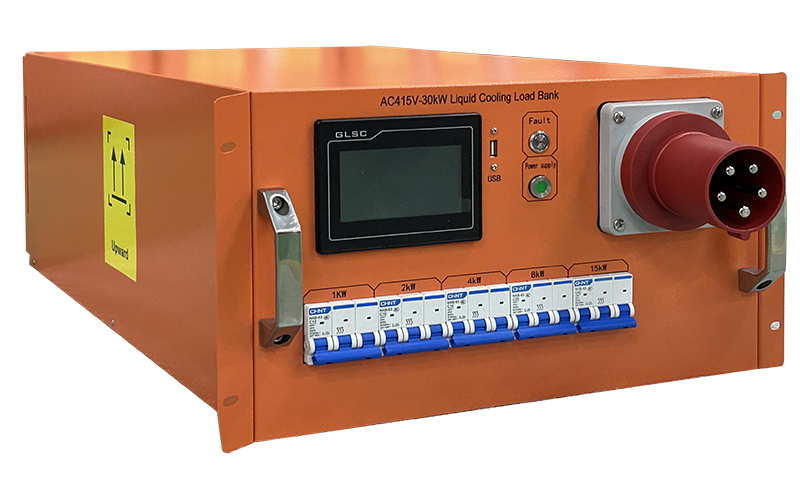Classification of Liquid Cooled Load Banks
Time:2025-10-28
Liquid cooled load banks are key testing equipment in fields such as power systems and energy storage devices. They can simulate load requirements under different working conditions, while quickly dissipating heat through liquid cooling to ensure safe and stable testing. Their classification can be divided based on core dimensions such as cooling medium, load type, and application scenario, with significant differences in performance characteristics and applicable scenarios among products of different categories.
Classification by Cooling Medium
This is the most basic classification method for liquid cooled load banks, with the core difference lying in the physical and chemical properties of the heat-dissipating liquid.
Water-based liquid cooled load banks: Deionized water or pure water is used as the cooling medium. They have high heat dissipation efficiency and low cost, making them suitable for scenarios where no special insulation requirements are imposed on the cooling medium, such as industrial generator testing. However, antifreeze protection should be noted, and antifreeze needs to be added in low-temperature environments.
Oil-based liquid cooled load banks: Insulating oil is used as the cooling medium, which has both heat dissipation and insulation functions. They are suitable for high-voltage equipment testing, such as high-voltage frequency converter debugging. Nevertheless, their heat dissipation speed is relatively slow, and the oil needs to be replaced and maintained regularly.
Ethylene glycol-based liquid cooled load banks: Ethylene glycol aqueous solution is used as the medium, which has strong low-temperature antifreeze performance and can work stably in environments ranging from -30℃ to 60℃. They are commonly used in energy storage system testing in outdoor or cold areas.
Classification by Load Type
This classification is based on the load characteristics simulated by the equipment, directly related to the functional verification requirements of the test objects.
Resistive liquid cooled load banks: They simulate pure resistive loads and are mainly used to test the active power output capacity of equipment, such as the load-carrying capacity detection of UPS power supplies. They have a simple structure and high load adjustment accuracy.
Inductive liquid cooled load banks: They simulate inductive loads and can test the starting and operating performance of inductive equipment such as motors and transformers. They need to be equipped with a dedicated inductance adjustment module, and have high requirements for load stability.
Capacitive liquid cooled load banks: They simulate capacitive loads and are mostly used in compensation circuits or to test the reactive power handling capacity of equipment, such as the power factor verification of new energy inverters. Their application scenarios are relatively niche but highly professional.
Classification by Application Scenario
This classification focuses on the environmental and functional requirements of actual usage scenarios, and the product design is more targeted.
Industrial-grade liquid cooled load banks: They can withstand harsh working conditions, with excellent dust-proof and anti-corrosion performance. They are suitable for factory acceptance testing of motors and distribution cabinets on production lines. They are usually large in size and support continuous long-term operation.
Data center-grade liquid cooled load banks: They focus on high efficiency, energy conservation, and low noise, adapting to the testing needs of data center server power supplies. They can accurately simulate load changes of servers under different operating states, ensuring the power supply stability of data centers.
New energy-grade liquid cooled load banks: They are specially designed for equipment such as energy storage batteries and photovoltaic inverters. They support a wide voltage range and rapid load switching, and can simulate charge-discharge cycles to help optimize the performance of new energy equipment.
News Recommendation
-
 2024-09-11
2024-09-11TRIUMPH LOAD EXHIBITING AT Enlit Europe 2024 -BOOTH 7.H08
-
 2023-04-21
2023-04-21TRIUMPH LOAD EXHIBITING AT DATA CENTER WORLD GERMANY 2023-BOOTH F909
-
 2023-04-06
2023-04-06TRIUMPH LOAD EXHIBITING AT ELECTRIC POWER TECH KOREA 2023 – Booth G109
-
 2022-05-05
2022-05-05What is the role of ac load bank for power supply?
-
 2022-05-05
2022-05-05What is the role of the load bank?


